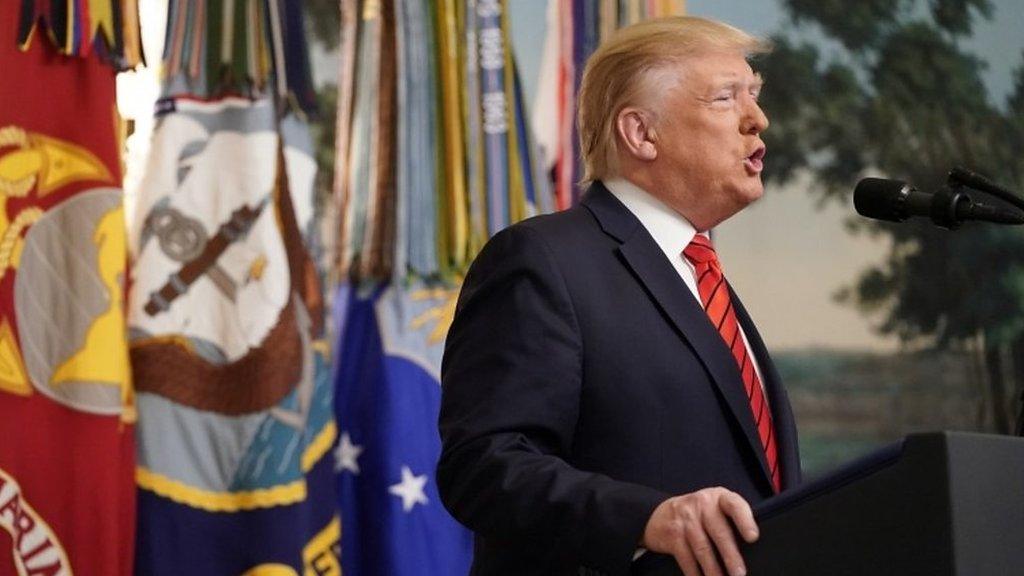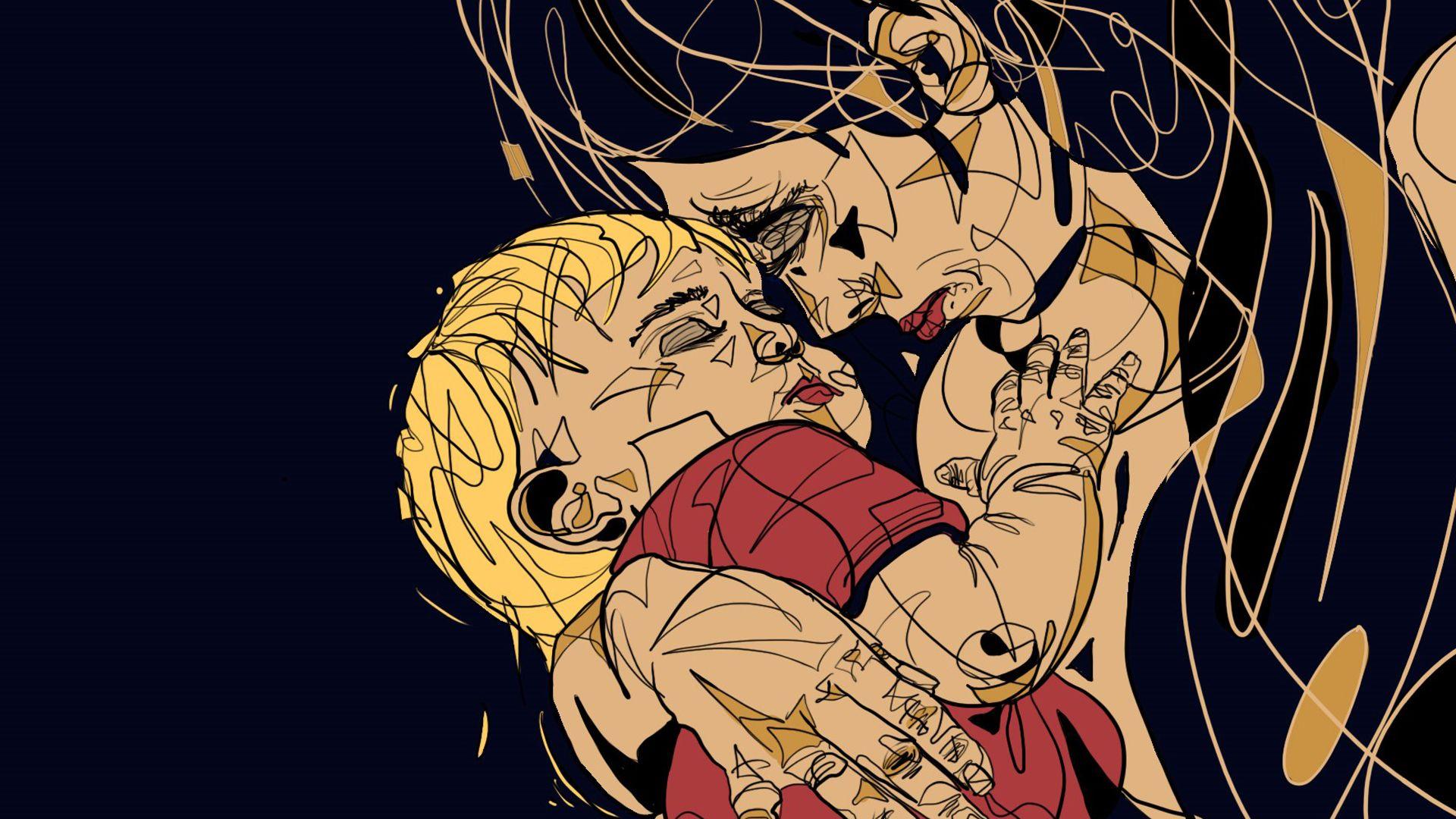Widow of IS leader reveals details of their life together
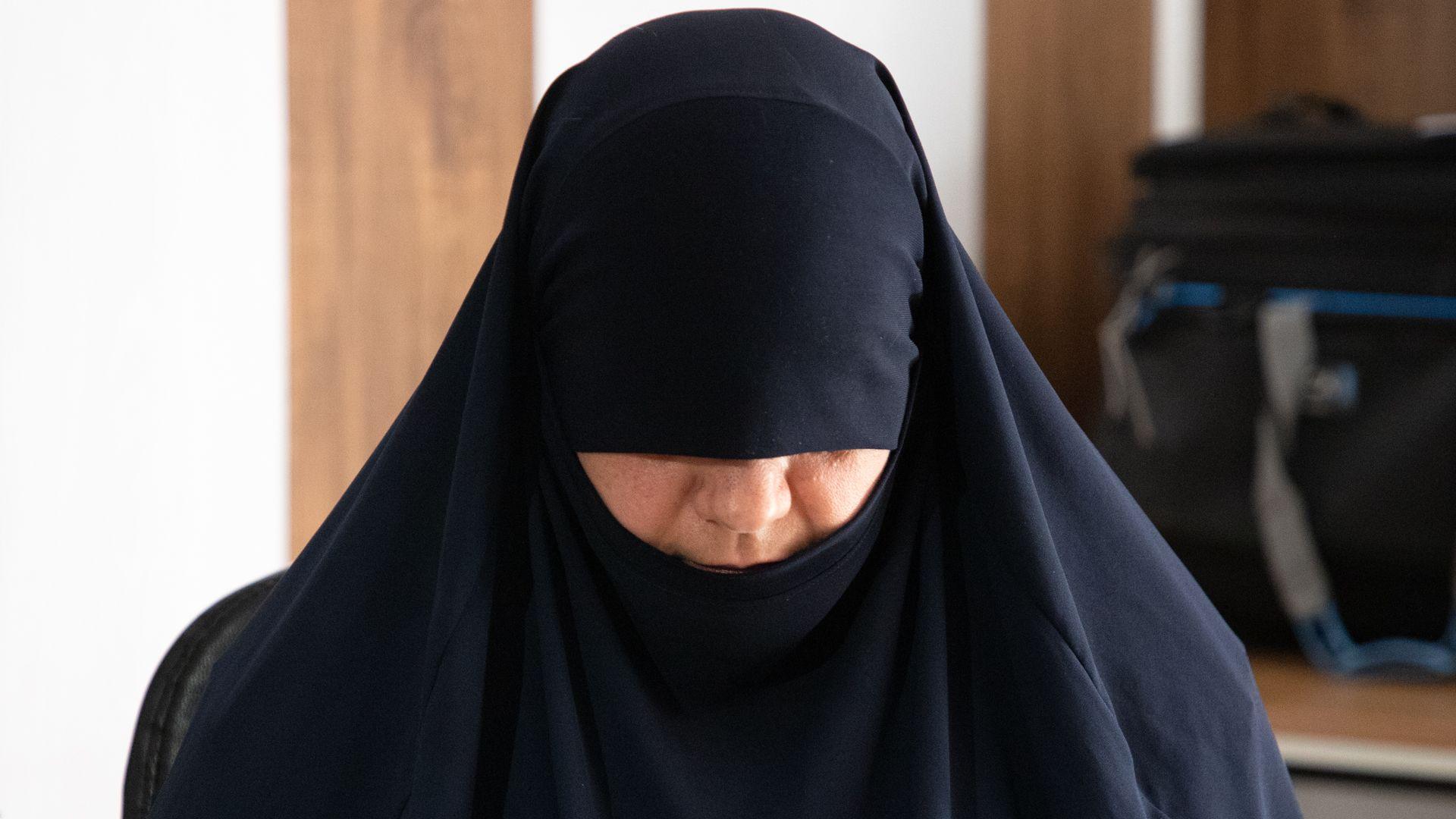
Umm Hudaifa, the first wife of the late IS leader Abu Bakr al-Baghdadi, is now in prison in Iraq
- Published
In a rare interview from prison, a widow of the Islamic State group’s leader has shared her account of their life. Umm Hudaifa was the first wife of Abu Bakr al-Baghdadi and was married to him while he oversaw IS’s brutal rule over large parts of Syria and Iraq. She is now being held in an Iraqi jail while she is investigated for terrorism-related crimes.
In the summer of 2014, Umm Hudaifa was living in Raqqa, IS’s then-stronghold in Syria, with her husband.
As the wanted leader of the extremist jihadist group, Abu Bakr al-Baghdadi often spent time in other locations, and on one of those occasions he sent a guard to the house to pick up two of their young sons. “He told me they were going on a trip to teach the boys how to swim,” says Umm Hudaifa.
There was a television in the house that she used to watch in secret. “I used to turn it on when he wasn’t at home,” she says, explaining he thought it didn’t work. She says she was cut off from the world and he hadn’t let her watch television or use any other technology, such as mobile phones, since 2007.
A few days after the guard took the children, she says she switched on the television and got “a huge surprise”. She saw her husband addressing the Great Mosque of al-Nuri in the northern Iraqi city of Mosul, showing himself for the first time as the head of the self-declared Islamic caliphate. It was only weeks after his fighters had seized control of the area.

Abu Bakr al-Baghdadi speaking at the Great Mosque of al-Nuri in Mosul, July 2014
The footage of al-Baghdadi making his first public appearance in years, with his long beard, dressed in black robes and demanding allegiance from Muslims, was seen across the world and marked a key moment for IS as it swept across Iraq and Syria.
Umm Hudaifa says she was shocked to find out her sons were in Mosul with him rather than learning to swim in the Euphrates.
She describes the scene from the crowded prison in the Iraqi capital, Baghdad, where she is being held while Iraqi authorities investigate her role in IS and the group’s crimes. It’s noisy as inmates accused of various crimes, including drug use and sex work, are moved around the prison and food deliveries arrive from outside.
We find a quiet spot in the library and speak for nearly two hours. During our conversation she paints herself as a victim who tried to escape from her husband and denies she was involved in any of IS’s brutal activities.
This is a stark contrast to the way she is described in a court case brought by Yazidis who were abducted and raped by members of IS - they accuse her of colluding in the sexual enslavement of kidnapped girls and women.
During the interview, she doesn’t raise her head, not even once. She’s wearing black and only reveals part of her face, down to the bottom of her nose.
Umm Hudaifa was born in 1976 into a conservative Iraqi family and married Ibrahim Awad al-Badri, later known by the pseudonym Abu Bakr al-Baghdadi, in 1999.
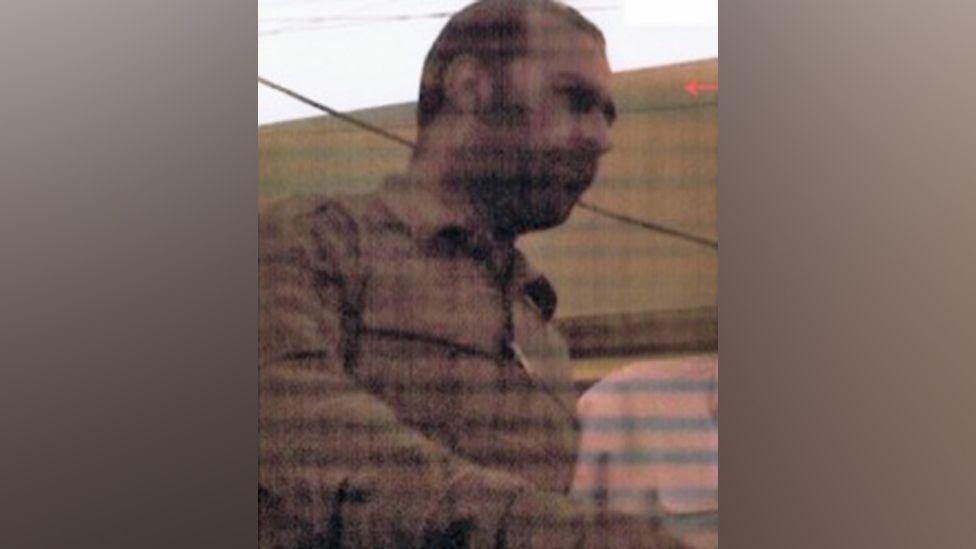
Previously unpublished CCTV footage of Ibrahim Awad al-Badri, later known as al-Baghdadi, taken in 2003 - supplied by Iraqi intelligence
He had finished studying Sharia, or Islamic law, at the University of Baghdad and she says at the time he was “religious but not extremist… conservative but open minded”.
Then in 2004, a year after the US-led invasion of Iraq, American forces detained al-Baghdadi and held him at the detention centre at Camp Bucca in the south for about a year, along with many other men who would become senior figures in IS and other jihadist groups.
In the years after his release, she claims he changed: “He became short tempered and given to outbursts of anger.”
Others who knew al-Baghdadi say he was involved with al-Qaeda before his time in Bucca, but for her, that marked the turning point after which he became increasingly extreme.
“He began to suffer from psychological problems,” she says. When she asked why, he told her that “he was exposed to something that ‘you cannot understand’”.
She believes that although he did not explicitly say so, “during his detention he was subjected to sexual torture”. Pictures from another US-run prison in Iraq, Abu Ghraib, that came to light that year showed prisoners forced to simulate sexual acts and adopt humiliating poses.
We put her allegation to the US Department of Defense, the Pentagon, but have not received a response.
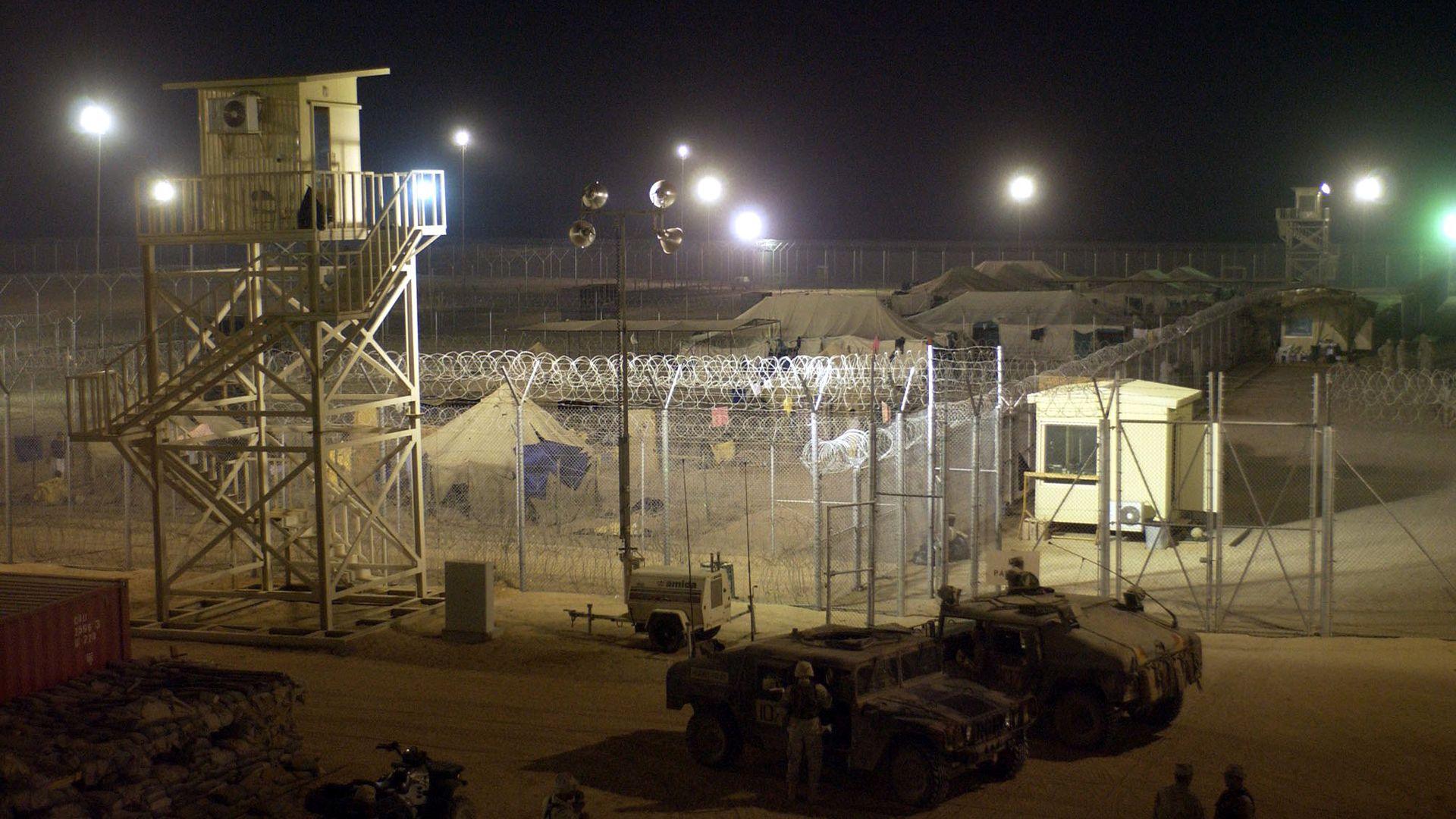
US-run Camp Bucca, 300 miles (500km) south-east of Baghdad, in October 2004
She says she started to wonder if he belonged to a militant group. “I used to search his clothes when he came back home, when he was taking a shower or when he went to sleep.
“I’d even search his body for bruises or injuries… I was perplexed,” she says, but she didn’t find anything.
“I told him back then, ‘You’ve gone astray’… it drove him into a raging fit.”
She describes how they often moved house, had fake identities and her husband married a second wife. Umm Hudaifa says she asked for a divorce but she wouldn’t agree to his condition that she give up their children, so she stayed with him.
As Iraq fell into bloody sectarian war that lasted from 2006 to 2008, she no longer had any doubt that he was involved in Sunni jihadist groups. In 2010 he became the leader of the Islamic State of Iraq - formed in 2006 this was an umbrella group of Iraqi jihadi organisations.
“We moved to the Idlib countryside in Syria in January 2012, and there it became absolutely clear to me that he was the emir [leader],” Umm Hudaifa says.
The Islamic State of Iraq was one of the groups that later joined forces to form the wider Islamic State group that declared a caliphate - an Islamic state governed in accordance with Sharia by someone considered a deputy of the Prophet Muhammad on Earth - two years later.
At that time, she says he started to wear Afghani dress, grew a beard, and carried a pistol.
As the security situation deteriorated in north-west Syria during the country’s civil war, they moved east to the city of Raqqa, which later came to be considered the de facto capital of the IS “caliphate”. This is where she was living when she saw her husband on television.
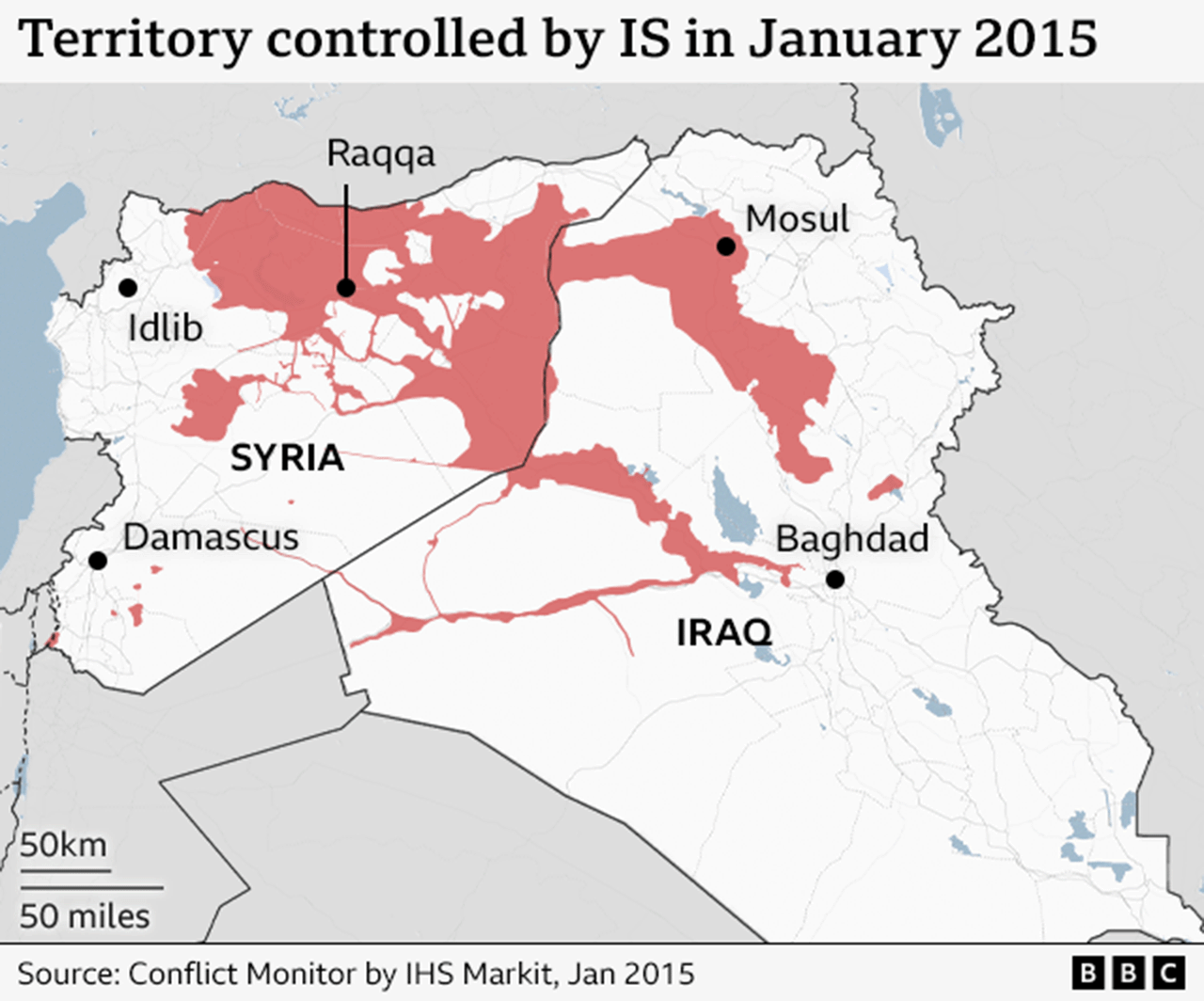
The brutality of the groups that came together to form IS was already well known but in 2014 and 2015, the atrocities became more widespread and more horrific.
A UN investigative team reported that it had found evidence that IS committed genocide against Iraq’s Yazidi minority and that the group had carried out crimes against humanity including murder, torture, kidnapping, and enslavement.
IS broadcast its atrocities, including the beheading of hostages and the burning of a Jordanian pilot, on social media.
In another notorious incident, it massacred about 1,700 predominantly Shia trainee Iraqi soldiers as they returned from the Speicher army base north of Baghdad to their home cities.
Some women who went to live with IS now say they didn’t understand what they were getting into so I pressed Umm Hudaifa on her views at the time - she says even then she couldn’t look at the pictures, describing the atrocities as a “huge shock, inhumane” and “to spill blood unjustly is a horrendous thing and in that regard they crossed the line of humanity”.
Umm Hudaifa says she challenged her husband about having “the blood of those innocent people” on his hands and told him that “according to Islamic law there are other things that could have been done, like guiding them towards repentance”.
She describes how her husband used to communicate with IS’s leaders on his laptop.
He kept the computer locked in a briefcase. “I tried to break into it to find out what was happening,” she says, “but I was technologically illiterate and it always asked me for a passcode.”
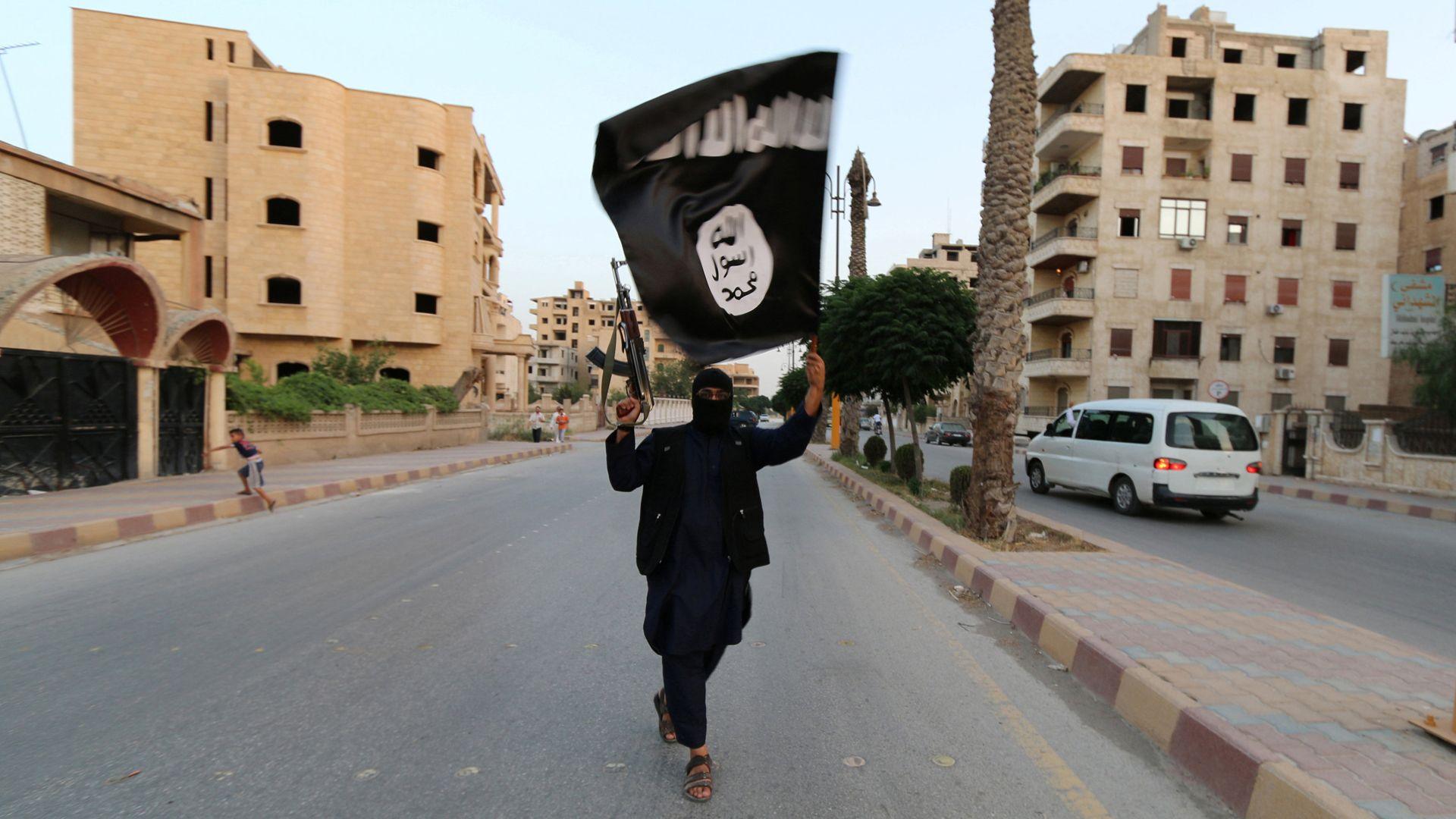
An armed member of IS walks through the streets of Raqqa, June 2014
She says she tried to escape, but armed men at a checkpoint refused to let her pass and sent her back to the house.
As for fighting, she says of her husband that as far as she knew “he didn’t take part in any fight or battle”, adding that he was in Raqqa when IS took control of Mosul - he travelled to Mosul later to give his speech.
Soon after that sermon, al-Baghdadi married their 12-year-old daughter, Umaima, to a friend, Mansour, who was entrusted with taking care of the family’s affairs. Umm Hudaifa says she tried to prevent it, but she was ignored.
An Iraqi security source told us that Umaima had already been married once before, at the age of eight, to a Syrian IS spokesman. However, he said the first marriage was arranged so that the man could go into the house when al-Baghdadi was away, and that relationship was not sexual.
Then in August 2014, Umm Hudaifa gave birth to another daughter, Nasiba, who had a congenital heart defect. This coincided with Mansour bringing nine Yazidi girls and women to the house. Their ages ranged from nine to about 30.
They were just a handful of thousands of Yazidi women and children enslaved by IS – thousands more were killed.
Umm Hudaifa says she was shocked and “felt ashamed”.
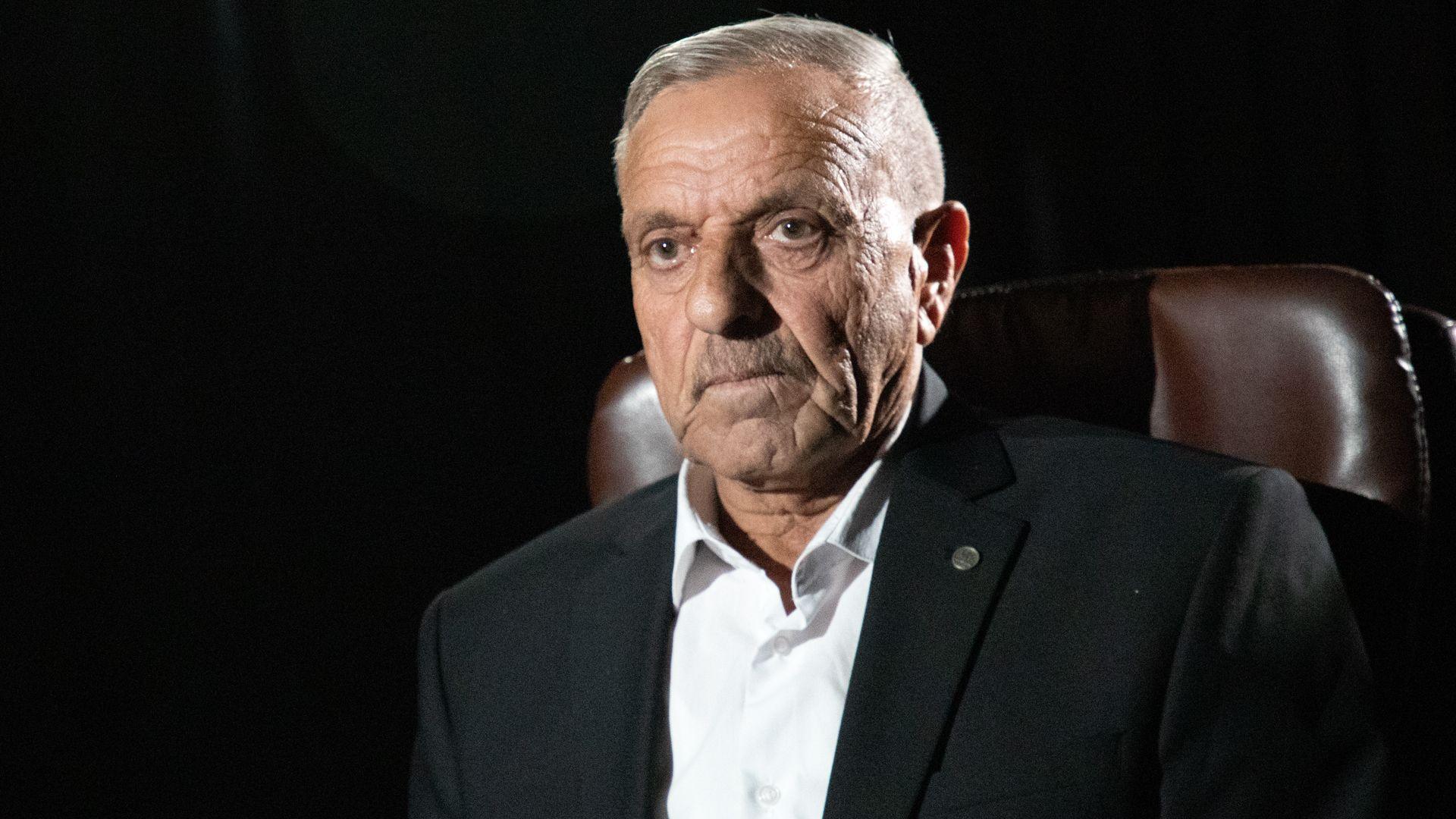
Hamid's daughter and niece were among the Yazidi girls taken to Umm Hudaifa's home
There were two young girls in the group, Samar and Zena - not their real names. Umm Hudaifa claims they only stayed in her house in Raqqa for a few days before they were moved. But later the family moved to Mosul and Samar reappeared, staying with them for about two months.
I tracked down Samar’s father, Hamid, who tearfully recalled the moment she was taken.
He said he had two wives and that they, along with his 26 children, two brothers and their families were all kidnapped from the town of Khansour in Sinjar. He escaped into the nearby mountains.
Six of his children, including Samar are still missing. Some returned after ransoms were paid and others came home after the areas where they were held were liberated.
The other girl, Zena, is his niece and is thought to be stuck in northern Syria. Zena’s sister, Soad, did not meet Umm Hudaifa herself, but was enslaved, raped and sold seven times.
Hamid and Soad have filed a civil lawsuit against Umm Hudaifa for colluding in the kidnapping and enslavement of Yazidi girls. They do not believe she was a helpless victim and are calling for the death penalty.
“She was responsible for everything. She made the selections - this one to serve her, that one to serve her husband... and my sister was one of those girls,” says Soad. She has based this on the testimonies of other victims who have returned home.
“She is the wife of the criminal Abu Bakr al-Baghdadi, and she is a criminal just like him.”
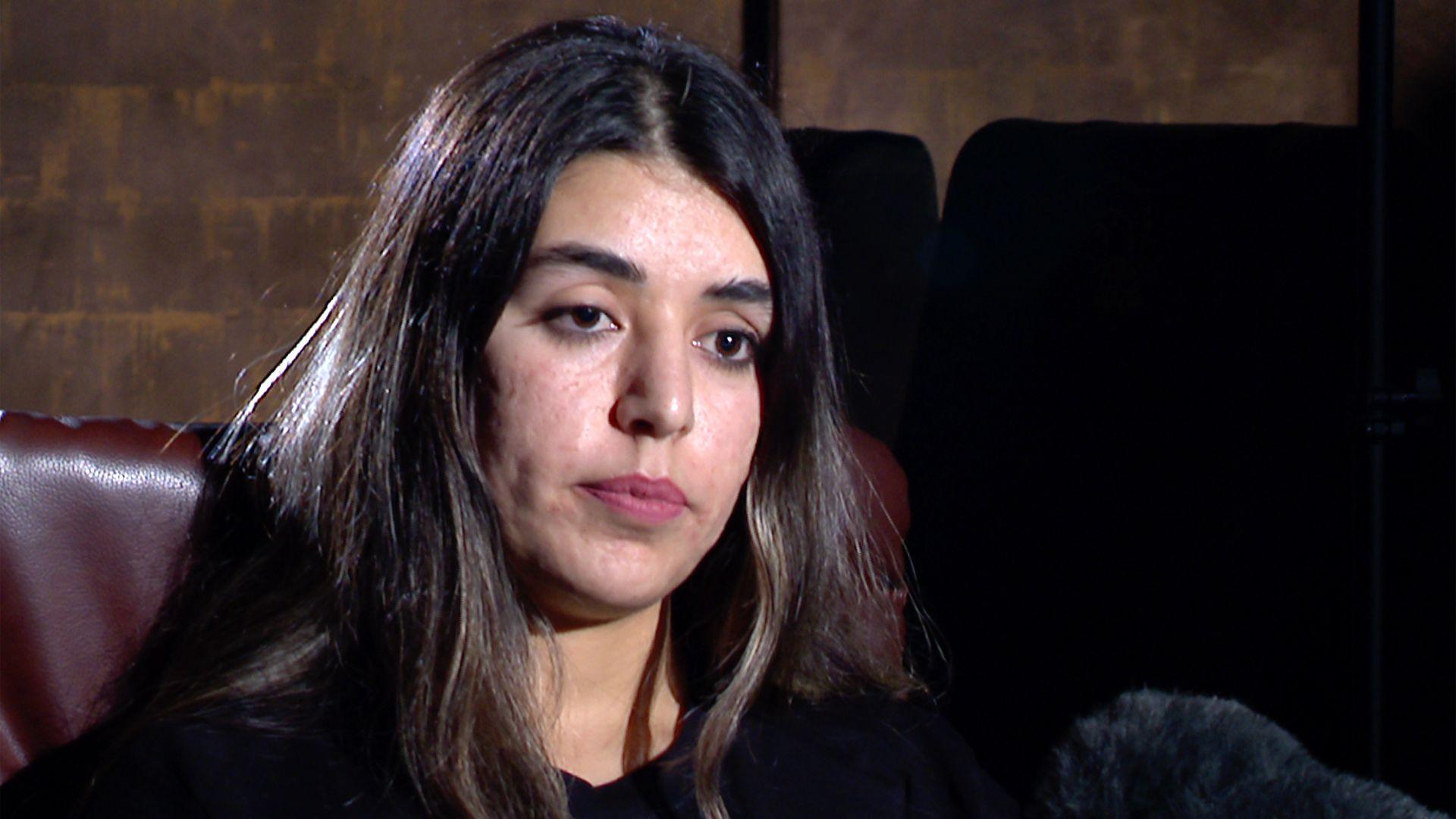
Soad is waiting for a date for her civil lawsuit against Umm Hudaifa to be heard
We play Umm Hudaifa the recording of our interview with Soad and she says: “I don’t deny that my husband was a criminal,” but adds she is “very sorry for what happened to them”, and denies the accusations directed at her.
Umm Hudaifa says that a little later, in January 2015, she briefly met the kidnapped US aid worker, Kayla Mueller, who was held hostage for 18 months and died in captivity.
The circumstances around Kayla’s death are still not known - at the time IS claimed she was killed by a Jordanian air strike, but the US always disputed this and an Iraqi security source has now told us she was killed by IS.
In 2019, US forces raided the place where al-Baghdadi and was hiding in north-west Syria with some of his family. Baghdadi detonated an explosive vest when cornered in a tunnel, killing himself and two children, while two of his four wives were killed in a shootout.
Umm Hudaifa was not there however - she had been living in Turkey under a false name where she was arrested in 2018. She was sent back to Iraq in February this year, where she has since been kept in prison while authorities investigate her role in IS.
Her eldest daughter Umaima is in prison with her, while Fatima who is about 12 is in a youth detention centre. One of her sons was killed in a Russian air strike in Syria near Homs, another died with his father in the tunnel and the youngest boy is in an orphanage.
When we finish talking, she raises her head and I briefly catch a glimpse of her full face, but her expression gives nothing away. As the intelligence officer leads her away, she pleads for more information about her youngest children. And now, back in her cell, she must wait to find out if she will face criminal charges.
Related topics
- Published17 October 2017
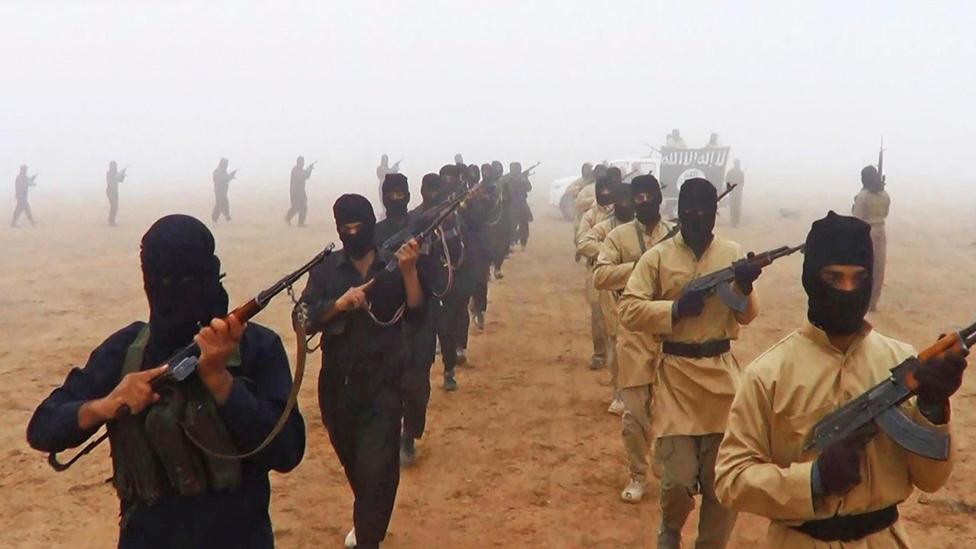
- Published28 October 2019
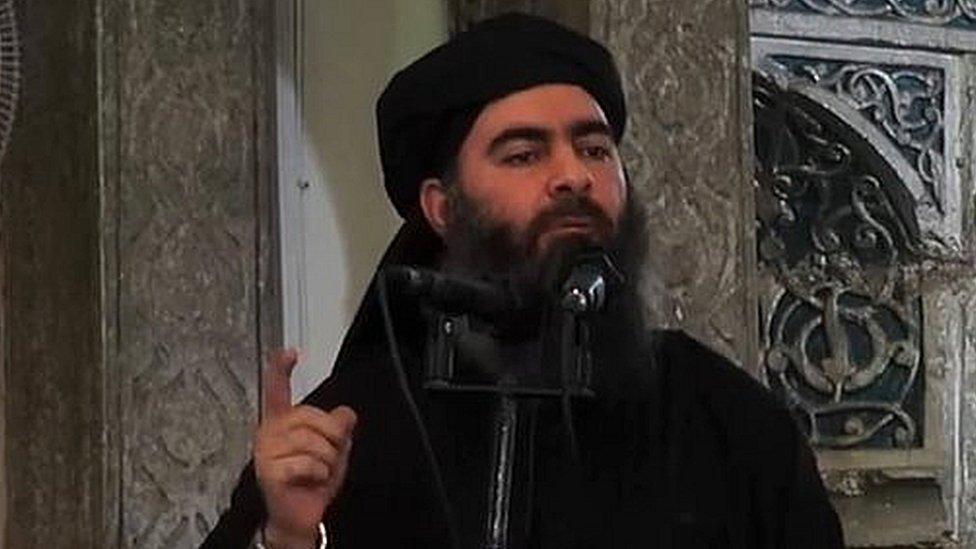
- Published28 October 2019
